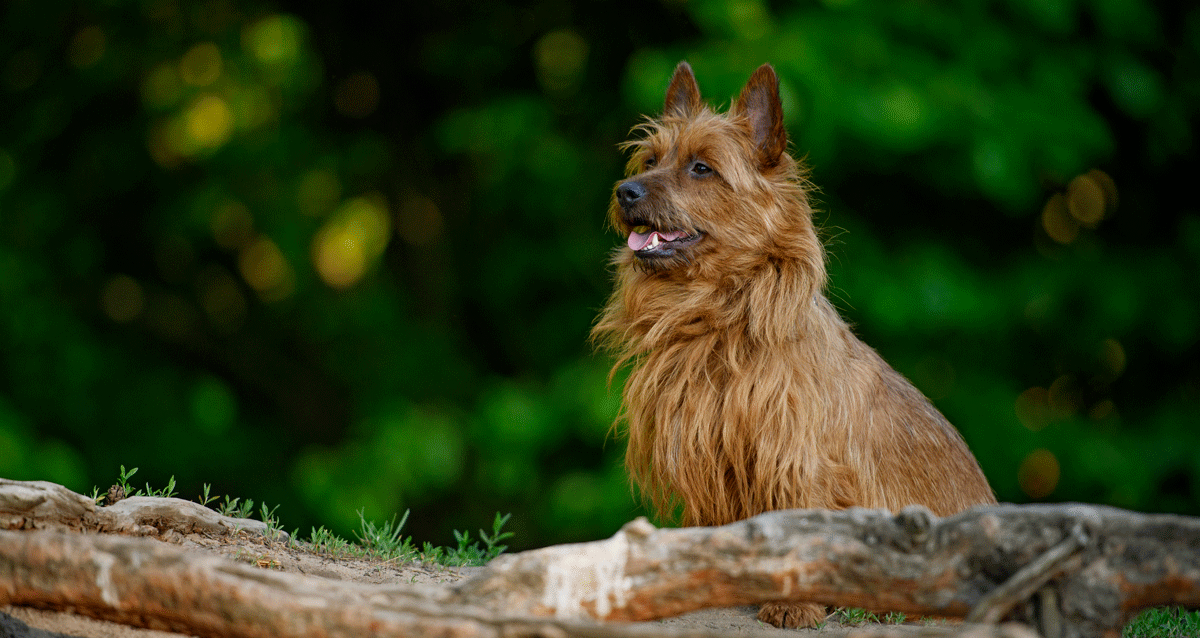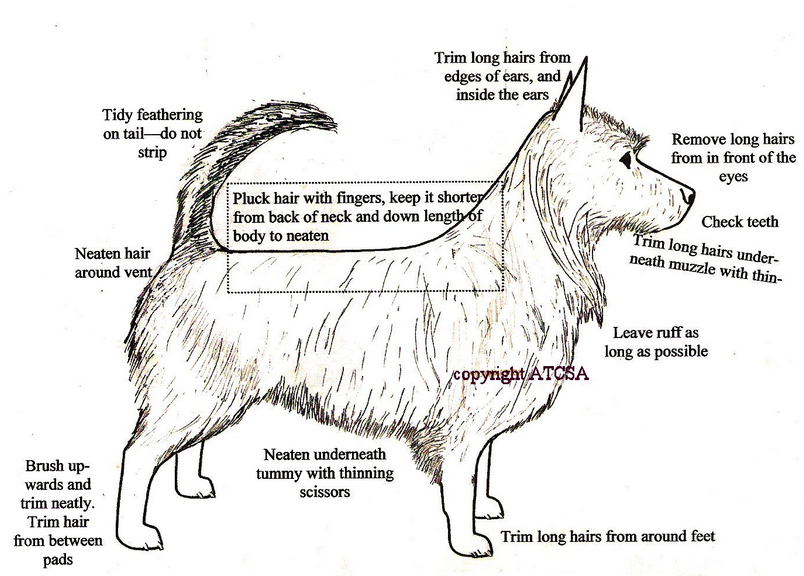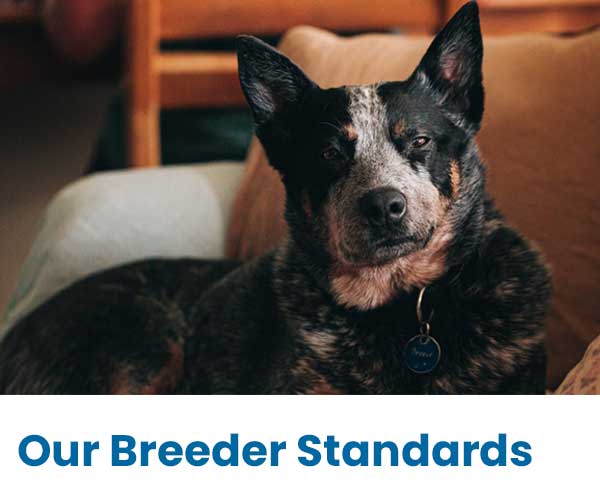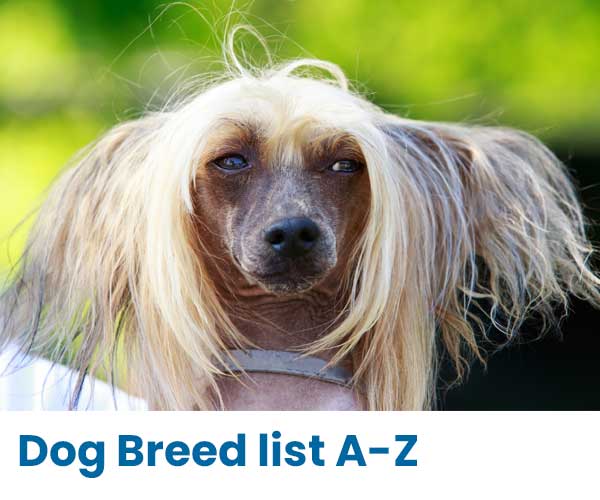Australian Terrier breed guide
The Australian Terrier was developed in Australia, with the ancestral types of dogs from which the breed descends from Great Britain. The breed shares ancestors with the Cairn Terrier, Shorthaired Skye Terrier, and the Dandie Dinmont Terrier. Yorkshire Terriers and Irish Terriers were also crossed into the dog during the breed's development.
Australian Terrier Temperament
While essentially a working terrier, the Australian Terrier was also bred for companionship, so they tend to be very people friendly, and enjoy interacting with people. The breeds loyalty and even disposition also make it a wonderful companion dog. They should not be considered for a backyard dog, the Australian Terrier needs to live indoors as a member of the family. They are well suited for apartment living, but only if you train well to control barking. These little dogs are very alert watchdogs or, as the neighbors sometimes describe them, nuisance barkers.
The breed standard describes the ideal Australian Terrier temperament as spirited, alert, "with the natural aggressiveness of a ratter and hedge hunter". The breed ranks 34th in Stanley Coren's The Intelligence of Dogs, being of above average "Working and Obedience" intelligence, indicating good trainability. As with most of the terriers, training from a young age is important to channel their inquisitive and active nature. A bored Australian Terrier with energy to burn can become destructive and troublesome. Australian Terriers are not the best choice if you also have cats, and they don't always get along well with other dogs, particularly other males.
Australian Terrier General Appearance
The Australian Terrier is a sturdy low-set dog, small, with short legs and rather long body in proportion to their height. Males are approximately 25 cms (approx 10 Inches) at the shoulder and 6.5kg (14lbs). Females are slightly less in both. The long strong head assists in developing its hard bitten, rugged appearance.
The breed has a medium length shaggy harsh double coat that is not normally trimmed. The fur is shorter on the muzzle, lower legs, and feet, and there is a definite ruff around the neck that extends to the breastbone. The coat may be blue, steel blue or dark grey blue, with rich tan (not sandy) on face, ears, under body, lower legs and feet. The topknot may be blue, silver or a lighter shade than head colour.
Grooming Tips for the Australian Terrier
While show dogs require more careful grooming, the coat is relatively easy care and weekly combing or brushing to keep shedding to a minimum is generally all that is necessary. Always use a good quality bristle brush and wide toothed comb to groom your Australian Terrier. This will preserve the undercoat which is characteristic of the breed. If inexperienced, never trim drastically, and remember the golden rule of grooming - if in doubt, DON'T!
Photos Courtesy of Teraustralis Australian Terriers and thanks to the Australian Terrier Club of South Australia for contributing to information about this breed.
Additional Sources: Vet Street - Australian Terriers, Wikipedia: Australian Terriers
Potential health issues in Australian Terriers
Reputable breeders will ensure that their dogs and puppies are free of issues that Australian Terriers face so be sure to ask for proof that testing has been done for the potential health problems listed below. It should be noted that none of these tests are compulsory, but ethical breeders will do whatever tests are available to them to ensure they are breeding healthy, quality animals.
Many small dog breeds, including the Australian Terrier, can suffer from Legg-Calvé-Perthes disease (LCPD), a disorder that affects the hip joint and requires surgery. Another common problem in small dogs is a knee malfunction called luxating patellas, in which the kneecaps easily slip out of place. Treatment isn't always needed in mild cases but if severe it may require surgery.
Diabetes can occur in Australian Terriers and research into the disease is being pursued. Dogs with diabetes should never be used for breeding. Epilepsy, although very rare, can also affect the breed.
Degenerative Myelopathy is a progressive disease of the spinal cord that can affect Australian Terriers. According to Orivet Genetic Pet care 40% of the Australian Terriers tested are positive carriers of Degenerative Myelopathy. Positive carriers should never be bred from.
Australian Terriers can be prone to allergies (including food allergies) and ear infections for which there are no screening tests. Allergy treatment usually involves removal of the allergen from the dog's environment or medication. While these particular problems can't currently be tested for and prevented, reputable breeders will be willing to go over the health histories of their dogs and whether or not particular health concerns are prevalent in their lines.
Sources: Vet Street - Australian Terriers, Australian Terrier Club of South Australia- Genetic Testing
If you are a small scale ANKC registered breeder and would like to be listed here, just contact us or follow a few simple steps to add your details yourself.
We welcome helpful comments and contributions to information about this breed by email








